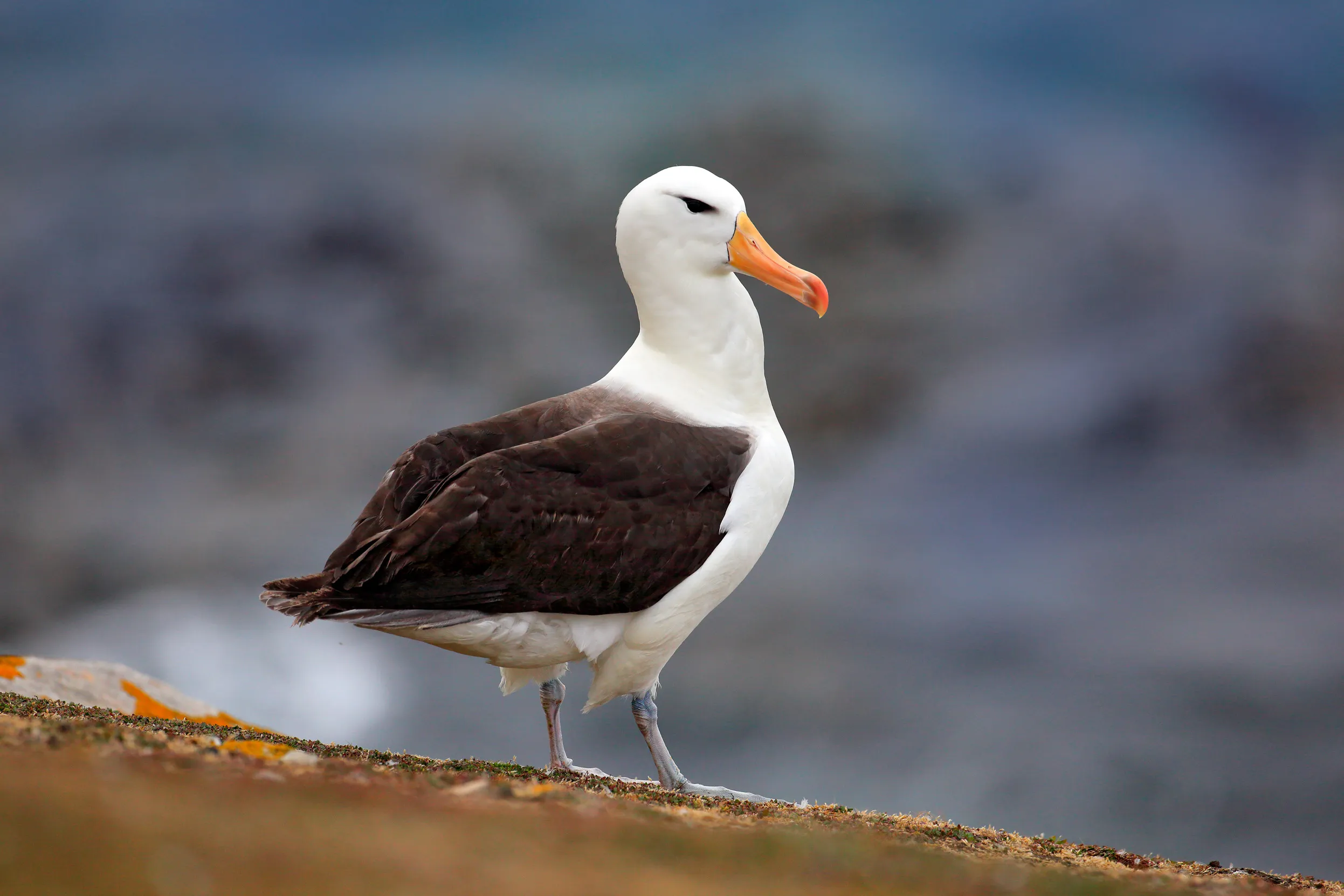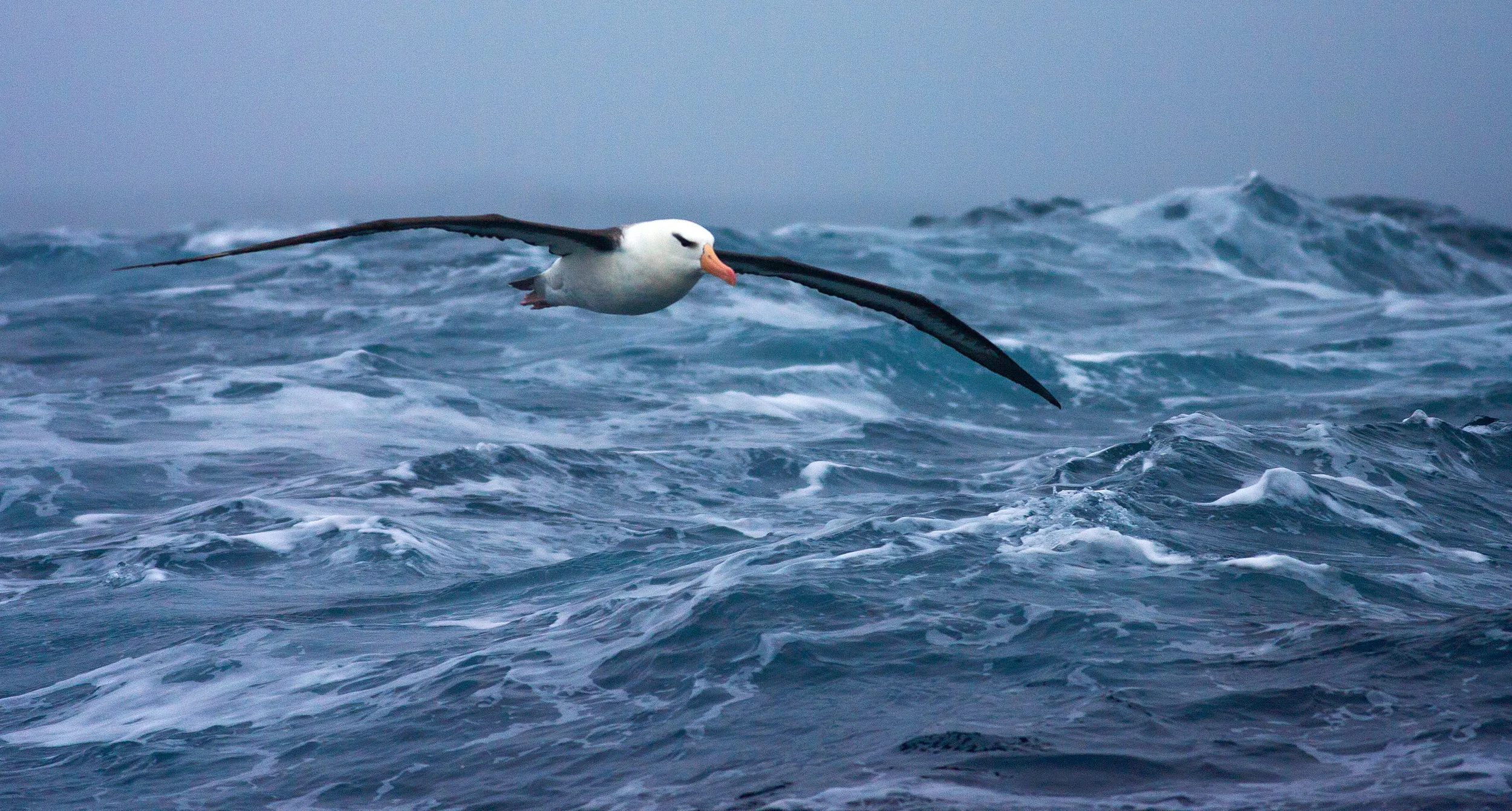Defend the albatross
Albatrosses are facing extinction. Getting trapped in fishing gear their biggest threat. We’re working together as part of a task force who’ve teamed up to change that, with the help of brightly coloured streamers…

On this page

The bad news
Life on the open seas is tough, but these ocean explorers are used to the towering waves, howling winds and blizzards. What’s causing them real problems is when they meet us as we search for fish. Albatrosses mainly feed on squid and fish at the surface of the water. But bait on long fishing lines or discarded fish around boats is pretty tempting too.
When they try to grab an easy meal, many become caught by baited hooks and drown, while others are fatally struck by the cables that tow nets. This is known as bycatch and is the biggest marine threat to albatrosses globally. It is the main reason their numbers continue to drop catastrophically - 15 out of the 22 albatross species remain threatened with extinction.
The good news
In 2006 the RSPB and BirdLife International said enough was enough. Together they assembled the Albatross Task Force - an international team of experts who work with policy makers and fishing crews on simple and cheap ways to save albatrosses with very little effort.
The methods included:
- Lines of bright colourful streamers, called tori lines, which frighten away albatrosses from baited hooks and trawl cables
- Switching to fishing at night, when most seabirds don’t feed
- Adding weight to long lines to make them sink faster – meaning there is less time for the birds to be caught on baited hooks
- Adopting innovative new techniques like hook-shields or underwater setting devices

The brilliant news
It’s working. Since 2006 when the Task Force started working in the South African trawl fishery, there has been a 99% drop in albatross deaths there. In Namibia there is a similar story. When the Task Force began, they estimated 22,000 birds were being killed in the waters off Namibia each year. The team began showing fishing crews the simple steps they could take, but also speaking to policy makers about making them a legal requirement for all fishing vessels. In 2015 the law was passed and by 2021 it was estimated that seabird deaths had been reduced by 98%. That is more than 21,000 birds saved.
More to be done
The hope is other countries will take similar steps to save albatrosses in their waters and the Task Force is already working in Argentina and Chile. But it is also the aim to try similar methods to help our seabirds in the UK.
Rory Crawford, former Bycatch Programme Manager for the BirdLife International Marine Programme, said:
“There is lots to be learned here in the UK from the success story in Namibia. The ingredients of at-sea engagement, mitigation measure testing, strong regulations and very high observer coverage – 100% in some fleets – in Namibia could easily be translated to our waters if the will and resources can be found.
“So, what are we waiting for?”
Despite all the great work being done, albatrosses are still in real trouble. With support from people like you we can continue to engage with countries where albatrosses are at high risk and work with the fishing industry to prevent more albatrosses getting trapped in fishing gear.
